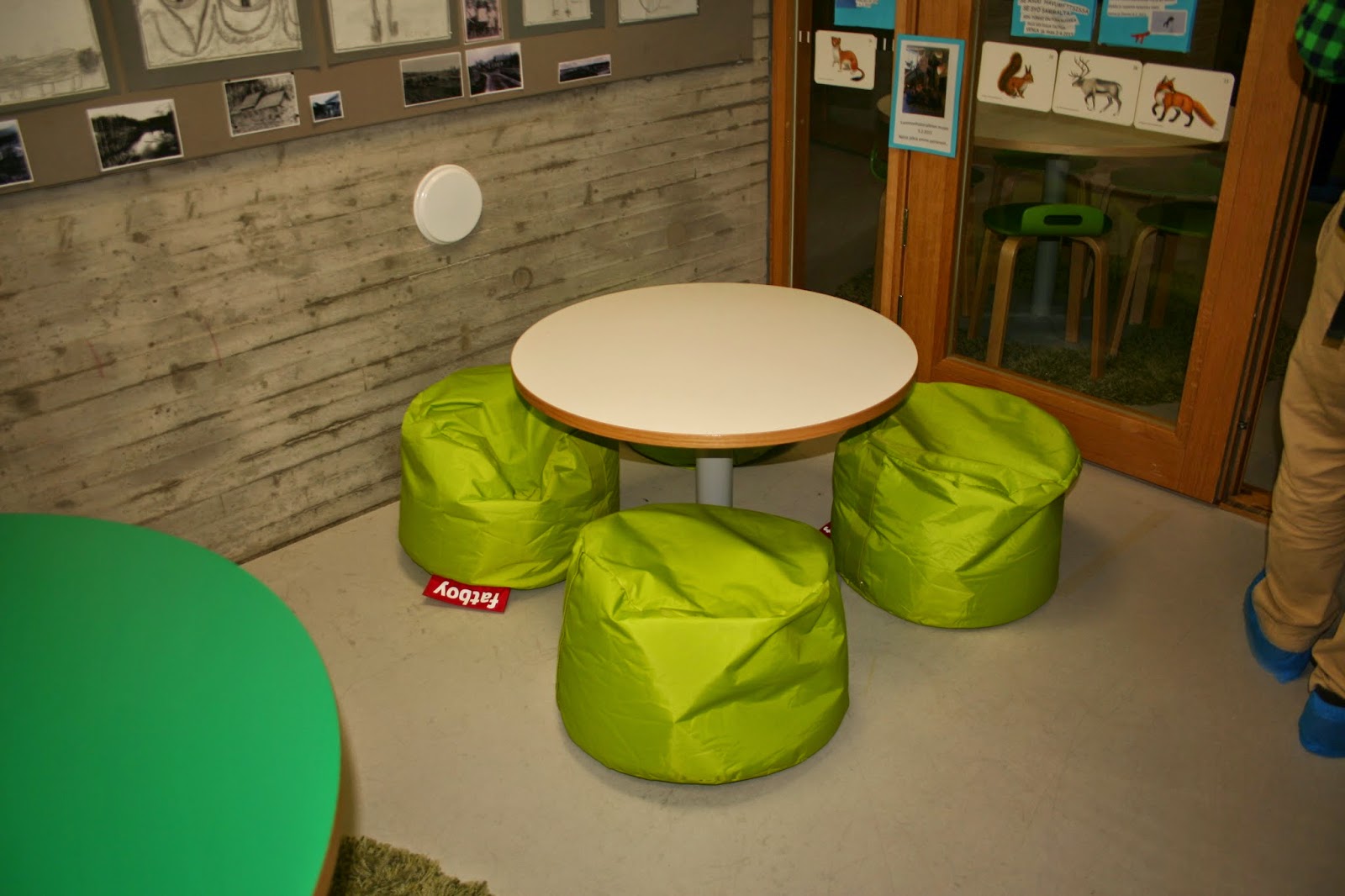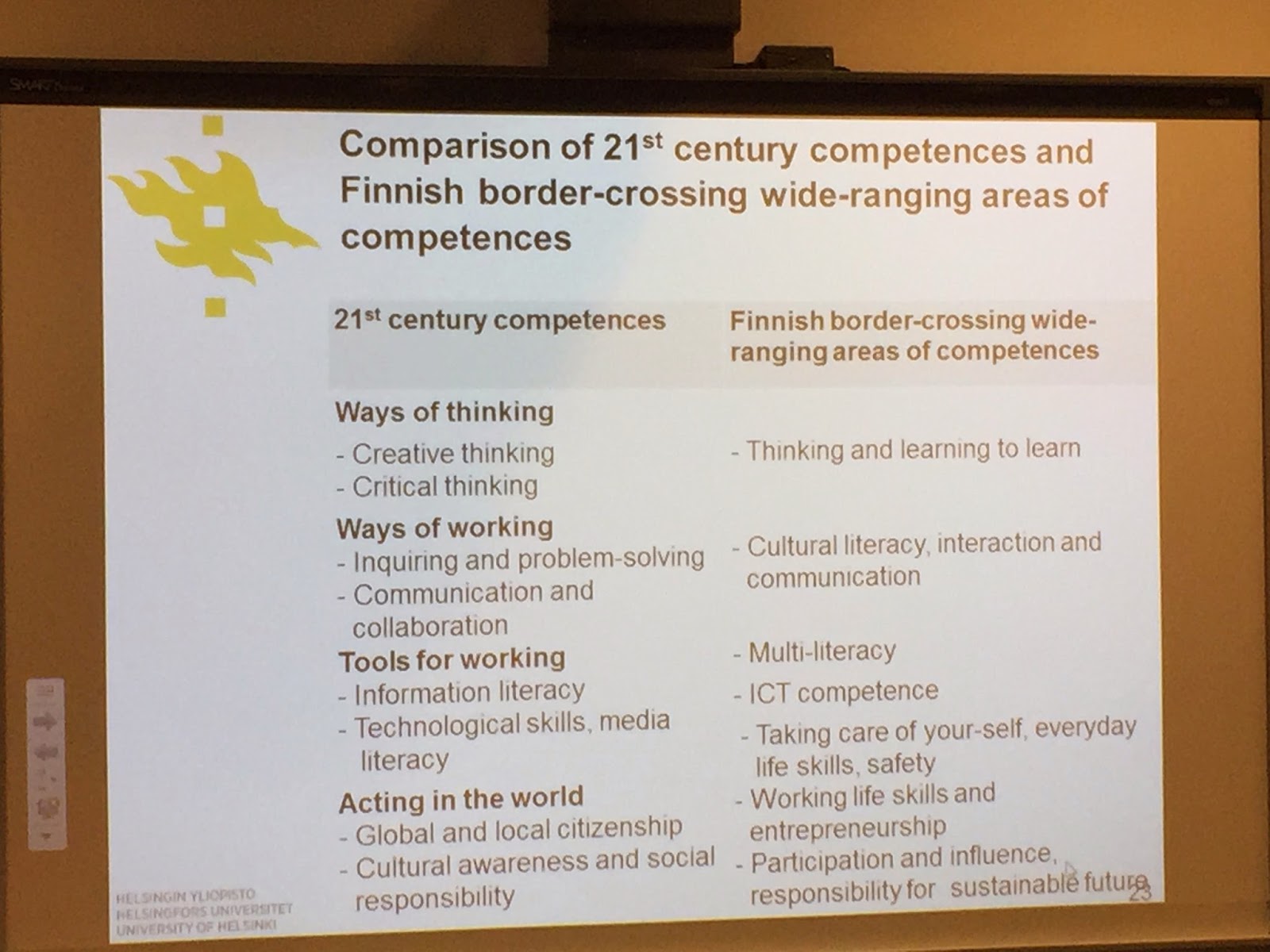I was fortunate enough to take a day trip to visit some schools in Kenosha, WI who have already worked on making their libraries more of an innovation space. I gained some wonderful ideas that I could take back to my buildings and implement. Some of these ideas included moving the book shelves around to create nooks with furniture for independent work or collaboration, utilizing more technology with mobile devices and a green screen area, genre cataloging (at one building this would be ideal), and an open door policy where students can come down whenever their teacher gives them permission to explore or create.
From here my passion was furthered inspired by the project-based learning, innovation, and personalized learning happening in Finland schools. Students were constantly investigating in areas that they could be comfortable in. They were given essential questions to drive their inquiry and the time to really put their all into the topic, not just 30 min like the schedule says and then its time to move on. Students could learn about things they were interested in too.
I took some time to focus on each space and what was best for my buildings in the beginning. I know that at one building the students have a strong genre focus when it comes to checking out books in the library. For this reason, I chose that building to be the one that I would catalog by genre in. I shared the idea with my aides and other resource staff who are willing to volunteer their time with me this August to make this a reality. I also know that at both buildings, buy in from staff and professional development on the space must happen. I want everyone to enjoy this space, not just some.
I finally took the time to sit down with each of my principals and discuss my vision for these spaces. I was met with enthusiasm and 'how can I helps'. Talk about becoming excited. I began scouring through some library resource catalogs to find options that fit what I was looking for.
Purchase orders were written for furniture that was mobile and comfortable. I then visited sites like MakerShed and STEMfinity to get some good STEM resources that students could work with (and that were not consumables at this point). I purchased resources for students to create with including textiles, paper, art supplies, and more. I used Scholastic Dollars from my book fairs to obtain some science investigation tools and reading resources, as well as additional furniture.
Embedding the technology into the space is another goal. I want to have mobile devices available for inquiry but also to make the space interactive with QR codes and Augmented Reality. There will be spaces for a green screen and video camera to be setup, as well as a Mac or computer workstations available to them to edit or create presentations. Science technology, like microscopes for investigation, and robotics equipment will be readily available to the kids too.
Lastly, I talked with my custodians about my vision for the layouts to make sure it was not only doable, but that they would be able to assist. Both of them were on board with finding a time towards the end of the year to sit down, discuss, measure shelving, map a layout, and draw up a final plan. I also am going to present at one of my buildings PTA meetings to see if additional funds or equipment could be donated to help brighten the space and provide additional resources.
I know this shift is not going to happen over night. It's going to take a lot of hard work on my part, and a lot of support from staff and administration. But I believe, just like the saying in a Field of Dreams, if you build it, they will come.

















.jpg)



.jpg)



















